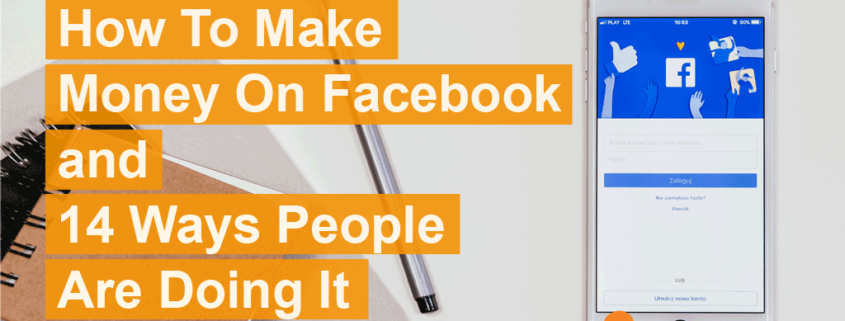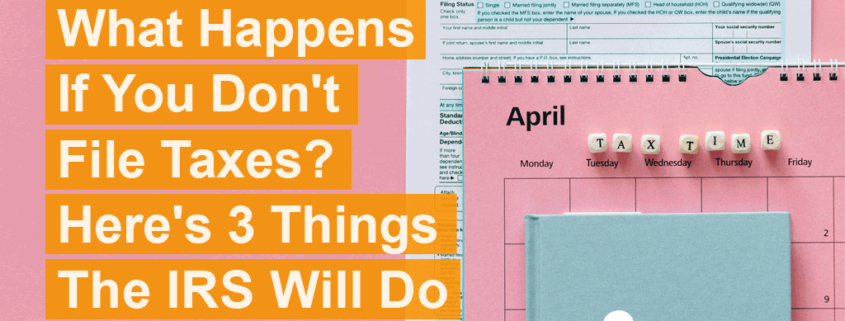Fastest Growing Housing Market in Each State

In some cases, however, moving to a new home can be well worth it. Whether it’s for a new job opportunity, lower housing costs, or just a serious change of scenery, thousands of Americans move every year despite the added complications.
But, there’s another important consideration to factor in, before packing and taping up those moving boxes: Where to move?
Each state boasts its own fastest-growing real estate market. Here’s a helpful guide to housing markets by state:
Hottest Real Estate Markets in Each US State
Listed below are the fastest-growing real estate markets across the United States, so future transplants can get a clearer sense of where more and more people are moving. What’s more, this article outlines the kind of housing values people can expect to find in each local market.
Understanding local housing market trends (including home price growth) could help individuals decide whether the community they’re eyeing is a potential paradise… or a pass. After all, it’s likely not worth investing in a buying house in an area with rapidly depreciating home values.
Without further ado, here are some of the hottest housing markets in the US by state.
1. Mount Olive, Alabama
Median Home Value: $172,460
Value Increase Over Last Year: 6.7%
Value Forecast for Next Year: -0.3%
2. North Pole, Alaska
Median Home Value: $249,625
Value Increase Over Last Year: -2.4%
Value Forecast for Next Year: -3.8%
3. Gilbert, Arizona
Median Home Value: $368,772
Value Increase Over Last Year: 7.6%
Value Forecast for Next Year: -0.3%
4. Bryant, Arkansas
Median Home Value: $168,095
Value Increase Over Last Year: 1.2%
Value Forecast for Next Year: -2.0%
5. San Jose, California
Median Home Value: $1,073,255
Value Increase Over Last Year: 2.6%
Value Forecast for Next Year: -0.7%
6. Colorado Springs, Colorado
Median Home Value: $323,194
Value Increase Over Last Year: 7.6%
Value Forecast for Next Year: -0.0%
7. Putnam, Connecticut
Median Home Value: $204,176
Value Increase Over Last Year: 4.2%
Value Forecast for Next Year: -2.0%
8. Newark, Delaware
Median Home Value: $250,558
Value Increase Over Last Year: -1.3%
Value Forecast for Next Year: -3.5%
9. Orlando, Florida
Median Home Value: $260,915
Value Increase Over Last Year: 3.4%
Value Forecast for Next Year: -1.6%
10. Fort Oglethorpe, Georgia
Median Home Value: $138,559
Value Increase Over Last Year: 2.4%
Value Forecast for Next Year: -1.2%
11. Ewa Beach, Hawaii
Median Home Value: $634,604
Value Increase Over Last Year: -1.3%
Value Forecast for Next Year: -3.2%
12. Boise, Idaho
Median Home Value: $341,449
Value Increase Over Last Year: 10.3%
Value Forecast for Next Year: 0.4%
13. Maryville, Illinois
Median Home Value: $218,810
Value Increase Over Last Year: 1.3%
Value Forecast for Next Year: -2.3%
14. Borden, Indiana
Median Home Value: $194,270
Value Increase Over Last Year: 3.2%
Value Forecast for Next Year: -2.3%
15. Council Bluffs, Iowa
Median Home Value: $143,349
Value Increase Over Last Year: 4.1%
Value Forecast for Next Year: -1.7%
16. Wichita, Kansas
Median Home Value: $138,575
Value Increase Over Last Year: 5.6%
Value Forecast for Next Year: -0.8%
17. Bellevue, Kentucky
Median Home Value: $143,413
Value Increase Over Last Year: 10.1%
Value Forecast for Next Year: -0.1%
18. Metairie, Louisiana
Median Home Value: $262,804
Value Increase Over Last Year: 3.5%
Value Forecast for Next Year: -1.5%
19. Naples, Maine
Median Home Value: $232,717
Value Increase Over Last Year: 7.4%
Value Forecast for Next Year: 0.2%
20. Columbia, Maryland
Median Home Value: $370,580
Value Increase Over Last Year: 2.7%
Value Forecast for Next Year: -1.7%
21. Haverhill, Massachusetts
Median Home Value: $347,569
Value Increase Over Last Year: 2.1%
Value Forecast for Next Year: -2.1%
22. Clawson, Michigan
Median Home Value: $219,748
Value Increase Over Last Year: 4.3%
Value Forecast for Next Year: -0.2%
23. Saint Paul, Minnesota
Median Home Value: $242,370
Value Increase Over Last Year: 4.7%
Value Forecast for Next Year: -1.1%
24. Horn Lake, Mississippi
Median Home Value: $112,862
Value Increase Over Last Year: 5.6%
Value Forecast for Next Year: -1.7%
25. Saint Louis, Missouri
Median Home Value: $131,350
Value Increase Over Last Year: 3.8%
Value Forecast for Next Year: -0.5%
26. Great Falls, Montana
Median Home Value: $198,854
Value Increase Over Last Year: 3.3%
Value Forecast for Next Year: -1.7%
27. Omaha, Nebraska
Median Home Value: $196,202
Value Increase Over Last Year: 6.7%
Value Forecast for Next Year: -0.8%
28. Reno, Nevada
Median Home Value: $403,318
Value Increase Over Last Year: 2.5%
Value Forecast for Next Year: -1.6%
29. Hampstead, New Hampshire
Median Home Value: $311,032
Value Increase Over Last Year: 2.3%
Value Forecast for Next Year: -2.1%
30. Bloomfield, New Jersey
Median Home Value: $370,320
Value Increase Over Last Year: 3.4%
Value Forecast for Next Year: -2.4%
31. Rio Rancho, New Mexico
Median Home Value: $209,579
Value Increase Over Last Year: 8.2%
Value Forecast for Next Year: -0.2%
32. Rochester, New York
Median Home Value: $158,512
Value Increase Over Last Year: 4.4%
Value Forecast for Next Year: -1.3%
33. Greensboro, North Carolina
Median Home Value: $164,532
Value Increase Over Last Year: 7.3%
Value Forecast for Next Year: -0.3%
34. Wahpeton, North Dakota
Median Home Value: $173,047
Value Increase Over Last Year: 4.5%
Value Forecast for Next Year: -1.7%
35. Orient, Ohio
Median Home Value: $218,776
Value Increase Over Last Year: 5.4%
Value Forecast for Next Year: -1.6%
36. Oklahoma City, Oklahoma
Median Home Value: $142,220
Value Increase Over Last Year: 6.8%
Value Forecast for Next Year: -0.3%
37. Eugene, Oregon
Median Home Value: $349,466
Value Increase Over Last Year: 8.5%
Value Forecast for Next Year: -0.1%
38. Levittown, Pennsylvania
Median Home Value: $258,439
Value Increase Over Last Year: 5.5%
Value Forecast for Next Year: -1.6%
39. Greenville, Rhode Island
Median Home Value: $329,106
Value Increase Over Last Year: 7.1%
Value Forecast for Next Year: -0.8%
40. Greenville, South Carolina
Median Home Value: $207,299
Value Increase Over Last Year: 5.0%
Value Forecast for Next Year: -1.0%
41. Rapid City, South Dakota
Median Home Value: $212,403
Value Increase Over Last Year: 5.0%
Value Forecast for Next Year: -1.7%
42. Chattanooga, Tennessee
Median Home Value: $171,384
Value Increase Over Last Year: 4.5%
Value Forecast for Next Year: -1.6%
43. Hurst, Texas
Median Home Value: $239,576
Value Increase Over Last Year: 5.0%
Value Forecast for Next Year: -1.2%
44. Salt Lake City, Utah
Median Home Value: $419,987
Value Increase Over Last Year: 5.3%
Value Forecast for Next Year: -1.4%
45. Burlington, Vermont
Median Home Value: $353,322
Value Increase Over Last Year: 3.7%
Value Forecast for Next Year: -1.0%
46. Fairfax, Virginia
Median Home Value: $588,968
Value Increase Over Last Year: 3.8%
Value Forecast for Next Year: -2.3%
47. Spokane, Washington
Median Home Value: $264,212
Value Increase Over Last Year: 13.1%
Value Forecast for Next Year: 1.4%
48. Harpers Ferry, West Virginia
Median Home Value: $219,363
Value Increase Over Last Year: 4.1%
Value Forecast for Next Year: -1.8%
49. Milwaukee, Wisconsin
Median Home Value: $135,570
Value Increase Over Last Year: 6.8%
Value Forecast for Next Year: -1.8%
50. Laramie, Wyoming
Median Home Value: $253,653
Value Increase Over Last Year: 6.1%
Value Forecast for Next Year: -1.7%
The Takeaway
No matter where a new homeowner is thinking of heading, one of the more challenging parts of a move is tackling the financials. For first-time home buyers, understanding the home loan process can be a little overwhelming—especially on top of juggling all the details of a big move.
While it’s important to carefully consider all the available options for purchasing a new home, including leverageable savings and valuable assets. For some individuals, a home loan from a private lender can turn the dream of owning a home into a lived-in reality.
For example, SoFi Home Loans offer low, competitive rates and an easy online application. Pre-qualifying for a SoFi home loan can be done entirely online and takes just two minutes. Plus, checking your rate won’t affect your credit score1.
1Checking Your Rates: To check the rates and terms you may qualify for, SoFi conducts a soft credit pull that will not affect your credit score. A hard credit pull, which may impact your credit score, is required if you apply for a SoFi product after being pre-qualified.
SoFi Loan Products
SoFi loans are originated by SoFi Lending Corp. or an affiliate (dba SoFi), a lender licensed by the Department of Financial Protection and Innovation under the California Financing Law, license # 6054612; NMLS # 1121636 . For additional product-specific legal and licensing information, see SoFi.com/legal.
SoFi Home Loans
Terms, conditions, and state restrictions apply. SoFi Home Loans are not available in all states. See SoFi.com/eligibility for more information.
External Websites: The information and analysis provided through hyperlinks to third party websites, while believed to be accurate, cannot be guaranteed by SoFi. Links are provided for informational purposes and should not be viewed as an endorsement.


























